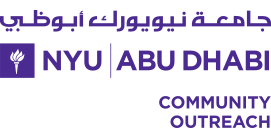Roots & Shoots UAE help facilitate a twinning programme between schools in the UK and schools in the United Arab Emirates.
Your students will have the opportunity to learn about another group’s homeland, environment, wildlife, culture, religion and languages. You’ll be able to use technology such as email and video conferencing to give your students a personalised look at your partner school and its students and activities. The perspectives you gain from another culture will encourage your students to express themselves clearly.
We’ve designed these web pages to make setting up a twinning programme as straightforward as possible. We’ve highlighted key success factors in making the twinning programme work. We also provide step-by-step resources (see below) to help you establish your twinning programme.
Once you’re up and running, educational resources specifically tailored to twinned schools will help you get the most out of the programme. We’ve also outlined some inspiration for other activities you may want to use.
Success Factors
We’ve highlighted several key areas on which you need to focus in order to ensure you get the most value out of your twinning programme. Before you set out to launch your programme, consider the following points and how you will address them. As you go through, you may want to download and use this form with your thoughts and ideas.
Goals
What do you want to achieve from your programme? Here are some of the possibilities; you may want to incorporate any or all of these into your programme.
- Language development
- Cultural understanding
- Specific educational development e.g. science, history, geography, literature, religious studies
- An exchange programme, allowing children to experience each other’s cultures directly
- Out-of-school development such as a pen-pal or email communication scheme
Scope
Will your twinning programme encompass just your Roots & Shoots group, a particular class, a year group, the whole school, or perhaps specific classes or groups scattered across the school? You may wish to start your programme with just your Roots & Shoots group, with a view to introducing new groups in subsequent years until the programme encompasses the entire school. This will be considerably easier than rolling out the programme across the whole school from day one.
Responsibilities
Your programme will work well if you have clearly allocated responsibilities for staff overseeing it. We recommend that at least two staff take ownership of the programme; this allows the programme to continue should one member of staff leave, and eases communication when staff are not always available.
You could choose two or more staff to equally share the responsibilities, or one more senior member of staff could formally manage the programme while another person (such as a newly qualified teacher) could shadow them, managing some of the day-to-day aspects of the programme whilst developing their understanding.
Timescales
You’ll need to plan your programme to revolve around the school year. Fortunately, schools in the UAE and UK share similar term-times, with a long holiday over the summer period (around a fortnight earlier in the UAE than in the UK), and shorter holidays over the Christmas / New Year period and towards the end of spring.
You’ll need to plan timings for the programme launch, but also for individual activities. Allow plenty of time for teachers in both schools to arrange resources for specific activities, and be sensitive to the fact that external time pressures may vary between the two schools (for example, from exam preparation or school events).
One big thing to bear in mind is that the school week is different in the two countries – in the UAE the school week runs from Sunday to Thursday, in the UK it is Monday to Friday.
Resources & Finance
UK schools in the Roots & Shoots programme are a mixture of “state schools” and “public schools”.
“State schools” in the UK are publicly funded and have relatively limited resources and finances. Most state schools will have resources for basic twinning activities, but for more expensive activities, such as those involving out-of-school trips and particularly overseas visits, funding will likely be very limited and students will be expected to pay for these themselves.
“Public schools” in the UK are actually private schools where parents normally pay for their children to attend. Consequently, public or private schools will usually have more resources and funding to commit to a twinning programme, and may be able to subsidise the cost of more expensive activities. Staff may have more independence and autonomy in decision-making and deciding where to commit their resources.
Some schools in the UAE taking part in the twinning programme may be funded and resourced more according to the private school model and others more to state school levels, so both parties will need to be sensitive to the limitations of the other. For example, a well-funded UAE school may have great plans for an activity for which a publicly-funded UK school may not have the resources or funding and vice versa.
Communication
One of the key essential elements of your programme will be communication.
Be structured but realistic from the start about communication. Who are the main points of contact in each school? Will you communicate solely by email, or will you also have phone conversations or conference calls? Email is often convenient for teachers, particularly in different time zones, because it’s asynchronous, unlike a phone call which requires all parties to agree on times and availability.
You may choose to adopt an ad-hoc approach to communication, or agree a regular weekly contact time. Flexibility may fit more conveniently around teachers’ availability.
When you first make contact with your twinned school, you’ll need to have an open, two-way discussion about all of the elements above, and some negotiation may be necessary to accommodate the visions of both parties.
Quite apart from the two-way communication between the schools, you should consider communicating the activities and benefits of your programme to the outside world. We encourage you to post regular updates on the Roots & Shoots websites in the UK and the UAE to do this. If you want to take an extra step, you could consider building a joint website which both schools can collaborate on. This is one possibility; a wiki-style site or Google Sites is ideal for this. You might also consider having both schools contribute to a page for your termly school newsletters if you have them.
Maintaining the Link
After you’ve put all the effort into setting up your twinning programme, it would be a shame for it to falter due to lack of support, enthusiasm or resources.
You can help avoid this by planning plenty of time in advance. For example, you may wish to agree a framework of activities across the course of the academic year. At the end of the year, don’t leave it too late to organise Year Two; aim to have the following academic year’s twinning plans in place before the summer.
Your programme will be more likely to succeed in the long term if your school’s senior leadership team or governors are invested in it as a concept, and kept up-to-date on progress and benefits over the course of time. A public record of your twinning programme (such as posts on the Roots & Shoots UK and UAE sites, a newsletter or your own website) may help here.
Step By Step Resources
To save time and effort, we’ve set up some resources for you to use to help with planning and launching your twinning programme. Do copy, adapt and appropriate these for your own needs – you might want to use Google Docs for this, as it means both schools can access key documents simultaneously.
We’ll consider three stages in time: what to do prior to your twinning, how to proceed when you have made contact with your twin school, and how to maintain the ongoing relationship.
Pre-Twinning
Download and use this form to help gather your thoughts together regarding the scope and practicalities of your twinning project.
Once you’re happy with your planning, fill in this online form, and our staff will put you in contact with potential twin schools.
After Initial Contact
Use this checklist to keep track of your initial discussions with your twin school.
Ongoing Relationship
This form gives you a way to record the successes and achievements of your twinning programme.
Online Resources
We’ve added some twinning activities and resources in our resources section.






















